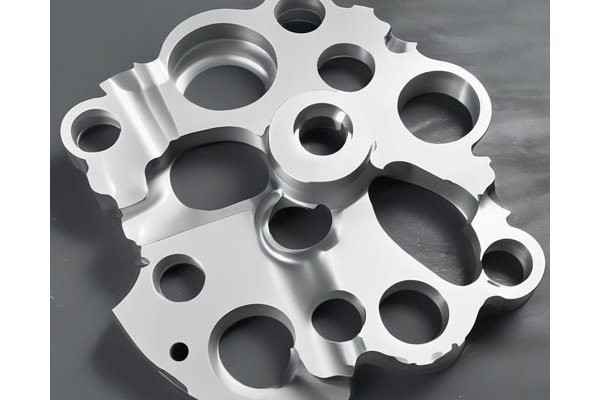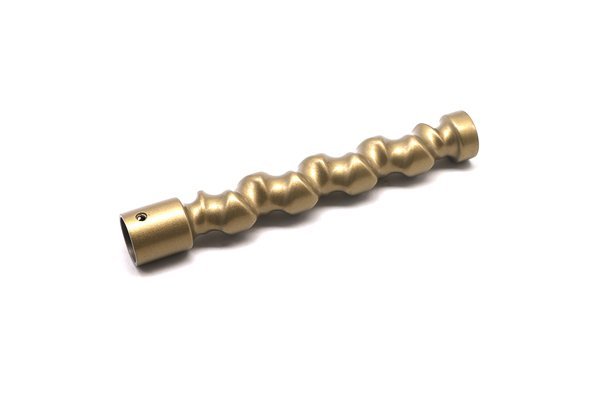Did you know that aluminum is the most widely used non-ferrous metal in the world? Due to its unique combination of properties, it constitutes about 8% of the Earth’s crust, which equates to a wealth of possibilities for various applications, especially in industries that rely on precision machining. With the increasing use of CNC (Computer Numerical Control) technology in manufacturing, understanding the machinability of different aluminum alloys has become crucial to enhancing production efficiency, reducing costs, and ensuring quality.
Why is Machinability Important?
Machinability refers to a material’s ability to be cut, shaped, and finished using cutting tools effectively. In the realm of CNC machining, it encompasses crucial factors such as tool wear, speed capabilities, and the quality of the finished surface. Aluminum-based alloys have unique characteristics and varying machinability that can significantly affect operation costs and production efficiency.
This blog aims to delve deep into the factors influencing the machinability of aluminum alloys, providing a comprehensive overview for manufacturers, CNC operators, and engineers. By the end, you’ll understand how to evaluate the machinability of different aluminum alloys for CNC applications, which will empower you to make informed decisions in your manufacturing processes.
—
Chapter 1: Aluminum Alloys and Their Composition
Aluminum alloys fall into two main categories: wrought and cast. Each has unique properties defined by its composition, which directly impacts machinability.
1.1 Wrought Aluminum Alloys
Wrought alloys are produced by mechanical processes such as rolling, extruding, or forging. These alloys are defined by a four-digit designation (e.g., 6061, 7075) and have excellent mechanical properties. The first digit represents the alloy series, e.g., 6000 series includes magnesium and silicon.
1.2 Cast Aluminum Alloys
Cast alloys are formed by pouring molten aluminum into a mold. They are designated by a four-digit numerical system (e.g., A356, A380). Cast alloys tend to be less malleable than wrought alloys, affecting their machinability.
1.3 Common Aluminum Alliances:
—
Chapter 2: Factors Influencing Machinability
Understanding the factors influencing the machinability of aluminum alloys is crucial for optimizing CNC operations.
2.1 Tool Material and Geometry
The selection of tools is critical when machining aluminum alloys. High-speed steel (HSS) and carbide materials are common. Tool geometry, like rake angle, relief angle, and cutting edge design, must be tailored to the specific aluminum alloy to enhance productivity.
2.2 Cutting Speed and Feed Rate
Machining aluminum requires different cutting speeds and feed rates. Softer alloys may be machined at higher speeds but may exhibit poor surface quality if the feed rate is too high. Establishing the ideal cutting parameters is vital to prevent tool wear and ensure accuracy.
2.3 Coolants and Lubricants
Using coolants can significantly affect surface finish and tool life. Water-soluble coolants are often used to manage heat during machining. Adjusting coolant flow and type can improve performance based on the alloy’s properties.
2.4 Work Hardening Resistance
Aluminum alloys like 7075 are more prone to work hardening as they undergo machining. This phenomenon can lead to increased tool wear and reduced part quality if not managed properly.
2.5 Surface Finish Requirements
The required surface finish dictates tool choice and process parameters. Alloys with tighter tolerances require specialized tooling and techniques to ensure high-quality finishes.
—
Chapter 3: Evaluating Machinability in CNC Applications
When evaluating the machinability of aluminum alloys for CNC applications, several metrics can be used for comprehensive assessment.
3.1 Tool Life Assessment
Measuring how long a tool lasts before it needs to be replaced is a primary indicator of machinability. Testing different alloys reveals valuable insights about which materials yield longer tool life and optimal cutting performance.
3.2 Chip Formation and Disposition

Understanding the nature of chip formation—continuous, built-up edge, or discontinuous—will influence process choice, speed, and coolant strategy. Ideally, continuous chips indicate a favorable machining environment.
3.3 Surface Finish Quality
After the machining operation, assessing the surface finish will help manufacturers understand machinability. Poor surface finishes can lead to complications in assembly or aesthetic issues in final products.
3.4 Dimensional Accuracy
Post-machining measurements determine how closely the part meets specifications. This factor is crucial when evaluating the effectiveness of selecting particular aluminum alloys.
—
Chapter 4: Best Practices for Machining Aluminum Alloys
To enhance CNC machining processes involving aluminum alloys, it’s essential to implement industry best practices.
4.1 Selecting the Right Aluminum Alloy
Prioritizing the appropriate alloy based on the machinability characteristics relevant to the intended application fosters better outcomes. Consider factors such as strength, corrosion through environment, and fabrication needs.
4.2 Tool Selection and Optimization
Select tools designed specifically for machining aluminum, with proper coatings that enhance wear-resistance and corrosion. Adjusting tool geometries like angles can result in improved machining performance.
4.3 Implementing CNC Programming Techniques
Sophisticated programming techniques, such as adaptive feed rates and tolerances, can optimize CNC machining. These adjustments can be crucial when handling different alloys and adjusting for varying performance characteristics.
4.4 Routine Maintenance of CNC Equipment
Regularly maintaining equipment ensures that CNC machines operate at peak efficiency. Scheduled adjustments and replacements can minimize unplanned downtimes affecting productivity.
4.5 Investing in Training for Operators
Offering ongoing education and skills enhancement benefits operators and overall machining processes. Understanding machining parameters specific to each aluminum alloy can significantly improve results.
—
Chapter 5: Challenges While Machining Aluminum Alloys
Even with an understanding of best practices, challenges still exist when machining aluminum alloys.
5.1 Tool Wear and Chipping
Tool wear becomes acute when machining highly alloyed materials such as
5.2 Managing Heat During Machining
Excessive heat can cause distortions and change mechanical properties of aluminum alloys. Employing effective heat management strategies, particularly with high-speed processes, is critical for maintaining quality and precision.
5.3 Expense and Tooling Costs
Choosing high-performance tooling can be an investment but is essential for effective machining. Balancing quality with cost-effectiveness should be a continual consideration.
5.4 Environmental Considerations
Reducing waste materials, optimizing coolant use, and managing dust and emissions are essential not just for compliance but for sustainability in machining operations.
—
The machinability of different aluminum alloys in CNC applications plays a pivotal role in manufacturing success. By exploring the properties of various aluminum alloys, understanding critical machining parameters, and implementing best practices, manufacturers can enhance efficiency, reduce operational costs, and achieve superior quality.
As industries increasingly turn to aluminum for its remarkable properties, staying informed about its machinability will be vital for any CNC operator. Continuous education, adoption of innovative technology, and process refinement emphasize how crucial machinability considerations are.
Reflection on the content provided here is essential; it not only serves as a reminder of the importance of the materials we employ but also highlights the intricate processes that contribute to the end products we see across industries every day. Embracing these insights can lead your operations to new heights of efficiency and productivity, ensuring you remain competitive in today’s fast-paced market.






